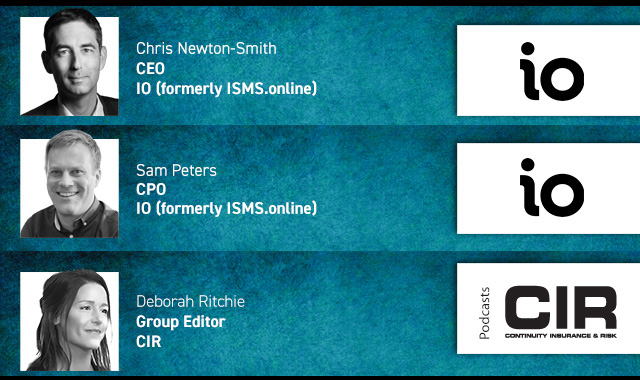From disruption to recovery
In a recently published paper, Leeds University Business School examined contemporary issues in supply chain risk management approaches, proposing that a review of the frameworks and skills is needed to ensure resilience. David L Loseby, Professor of Research Impact in Supply Chain Management at Leeds University Business School Business School, writes
Academics and practitioners in the resilience field agree that the current polycrisis in supply chains shows no end, and that the need to manage extensive risk in complex global supply chains is a factor that will define organisations over the coming years – not just in terms of supply chain resilience but also its direct correlation with competitive advantage and organisational performance.
Ongoing resilience will require an approach to global supply chains that by necessity will shift from tactical response and short-term actions to strategic investments, innovation and a redefinition of how supply chains operate. There is no doubt that supply chains – both upstream and downstream – will need to operate more transparently and collaboratively to create competitive advantage. Further, this needs to be incentivised, rather than based on a traditional contractual, or ‘penalty’, approach, resetting current behaviours and cultures.
Understanding the risks
VUCA and BANI offer two frameworks for understanding supply chain risks.
VUCA:
Volatility: the environment you are operating in has unexpected or unstable characteristics of unknown duration. Further, it may not be hard to recognise or seek knowledge/solutions to.
Uncertainty: The basic impacts may even well be known, but change is not a given in the circumstances and therefore this may endure.
Complexity: A global supply chain is by definition complex with many interconnected materials, resources and transfers, most of which are not fully known or mapped. Generally, the quantum of information needed to map an enterprise’s entire supply chain is large, may take years to define, and will by nature be dynamic.
Ambiguity: The interconnects within the supply chain are not fully mapped or clear. Causal relationships and indirect activities prevent comprehensive understanding of the supply network being the territory of the unknown unknowns.
BANI:
Brittle: The strength and certainty you may believe you have in your supply chain is simply unfounded, and it is more vulnerable to external events than you believe.
Anxious: The recognition that our supply chains are more fragile than we first thought makes us anxious. Therefore, decisions are made quickly, which can lead to mistakes, with potentially disastrous results. Further, we may employ a passive approach in fear making the wrong choice and worsening the situation – thereby delaying decisions and actions.
Non-linear: The disconnect between cause and effect, relative to actions in the supply chain, being time, proportion or expected outcomes. Complexity in supply chains becomes nonlinear, ie., without a single meaning or connection through the normal linkages that have been applied thus far.
Incomprehensible: Extremely difficult, if not impossible, to understand what is happening within a supply network or operation. Sense making is difficult, and analysis of any data or insights may also cloud the ability to understand, making it hard to distinguish signal from noise.
Talent and skills
A recent MIT Sloan review suggests that chief procurement officers believe their organisations need to develop employees with broad ranging skills in order to manage supply chain resilience. It recommended the rotation of assignments and roles, and the use of artificial intelligence and machine learning to uncover and develop new skills. It also urged caution regarding self-reporting of skills, as they can show an under-estimation of true capability. MIT also proposes embracing talent from all areas, not just STEM; and proactively preparing for future needs.
A separate report published in 2021 from McKinsey, entitled Building Workforce Skills at Scale to Thrive During – and After – the Covid-19 Crisis, identified the top 10 skills that survey respondents identified as being the most critical to build. Equally, to avoid talent loss organisations should reskill employees in; critical thinking (44 per cent); leadership and management (41 per cent); advanced data analysis (36 per cent); project management (33 per cent) and complex information processing (30 per cent). Advanced IT skills, statistical skills and digital skills all ranked above 25 per cent.
McKinsey identified the most critical talents to build for supply chain resilience, amongst them:
Cognitive: critical thinking, planning and ways of working, communication and mental flexibility.
Interpersonal: mobilising systems, developing relationships, teamwork effectiveness and collaboration.
Self-leadership: self-awareness and self-management, entrepreneurship and goal achievement.
Digital: digital fluency and citizenship, software use and development and understanding digital systems.
Clearly, this does not mean that all the classical skills are no longer applicable, but instead are at the core of a more rounded skillset.
Legislation increasing dynamically
The past decade has seen a significant amount of legislation across Europe, the US and Canada that aims to combat the effects of modern slavery across the world.
The implications of at total of 19 acts introduced in Europe and the US between 2012 and 2023 are applicable to organisations of different sizes, scopes of the supply chain, levels of scrutiny and transparency required. These can be summarised thus:
• Most regulations are targeted at large multinationals.
• New regulations also impact SMEs (but no clear mechanisms as to how these can be addressed).
• New regulations cover both direct and indirect suppliers.
• There is an increased demand for a higher level of transparency.
• There is an increased emphasis on integrating supply chain due diligence policy.
• There are a variety of penalties for non-compliance.
Geopolitical instability
Global supply chains entered 2024 engulfed in disruptions through two of the world’s crucial trade corridors, the Panama Canal and the Suez Canal, due to both geopolitical tensions and the impact of significantly lower rainfalls. Further, this also impacts rerouting into the US East Coast, because of attacks on ships by Houthi rebels, based in Yemen, responding to Israel’s war in Gaza.
This shift is forcing organisations to both tactically and strategically reset trade routes that have existed for decades. Wars in Ukraine and in the Middle East are threatening flows of grain, oil and consumer goods. Mass migrations are disrupting trade routes with the prominent example of the shift on the US-Mexico border, as trade decreases from Asia.
Many retailers and manufacturers during the pandemic flipped from a ‘just-in-time’ strategy of receiving manufactured goods as it is needed to a ‘just-in-case’ strategy of accumulating inventory to avoid production shortages or goods for resale. Inevitably most inventories are back to pre-pandemic levels with importers pulling in fresh orders. However, it is now more costly to carry higher stocks and thus forcing a lower level of ‘just in case’ stock.
More recently, Taiwan was hit with its biggest earthquake in 25 years, prompting fears about its impact on the semiconductor supply chain. The powerful 7.4 magnitude earthquake immediately raised concerns about its impact on the semiconductor supply chain, a factor that came into focus during the Covid-19 pandemic. The world’s largest semi-conductor chip manufacturer, TSMC, had previously warned that chip production factories in Taiwan would be rendered inoperable if China conducted military action against the island.
Additionally, one of the biggest issues Taiwan has faced in recent years has been drought (water being critical to the manufacture of chips) in 2021 suffering the worst water shortage since 1964. This all serves as a stark reminder of the potential hostilities would have, given 87 per cent of the world’s chip production is in Taiwan.
Headline challenges
The key challenges are:
• Collapse of systematically important supply chains.
• Oil and gas scarcity.
• Medical (including pandemic).
• Large-scale migration of industries away from conflict zones and state collapse.
• US debt default/ceiling, banking crisis.
• China’s economic downturn and mass unemployment.
• Climate crisis becomes triple planetary crisis of: climate change, pollution and biodiversity loss that could lead to mass migration/extinction.
• The above collapses could further increase the cost-of-living crisis, leading to a scale of loss in social cohesion unseen in recent decades.
This article was published in the Q2 2024 issue of CIR Magazine.
View as PDF
Contact the editor
Printed Copy:
Would you also like to receive CIR Magazine in print?
Data Use:
We will also send you our free daily email newsletters and other relevant communications, which you can opt out of at any time. Thank you.











YOU MIGHT ALSO LIKE